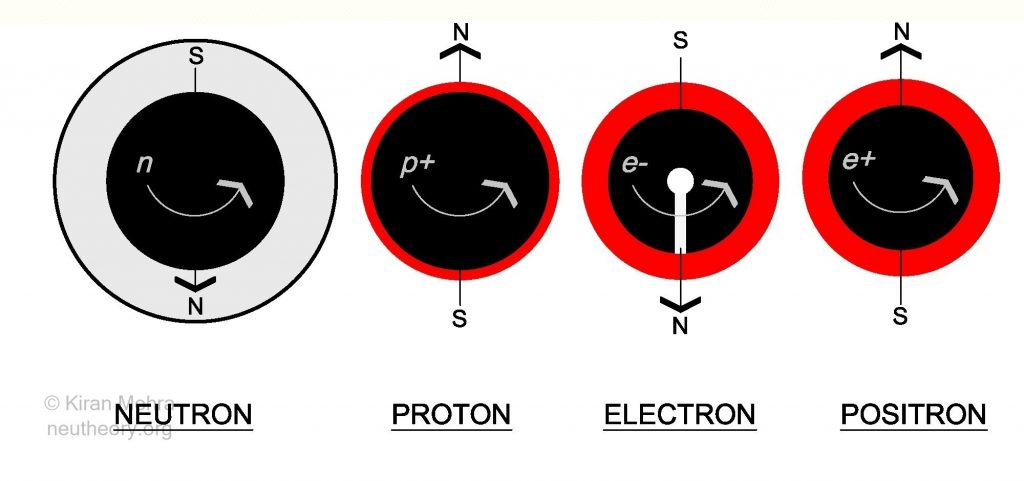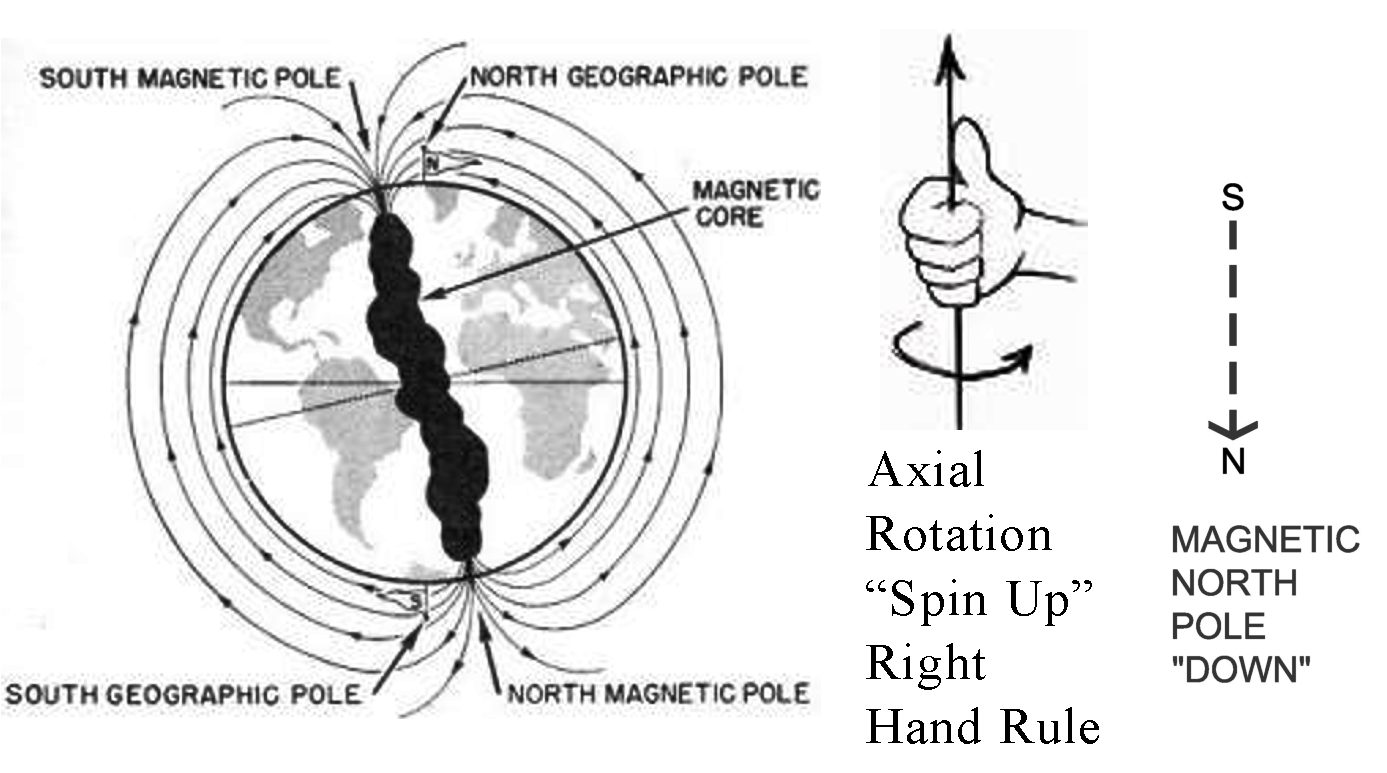Natural Direction
The One-Way Universe
The Physical Direction of Nature
In the Neu Theory model we live in a one-way universe. The direction of movement is permanently fixed by nature. What do we mean?
The first two elementary particles of matter, the core [1a][1b], and the membrane as the b-state electron [2b], spin in one direction only at the accelerating speed of light. This perpetual physical spin, called g-spin, establishes an axis of rotation of the physical body that points in two opposite directions in space. One of the directions we call North, and the other opposite direction we call South. The axis of rotation, has a physical length, and unless constrained, is free to orient itself in any direction of space.
It is hypothesized by Neu Theory, that no amount of energy or force in nature can change the direction of the physical g-spin of these two objects. This primal direction is built into nature.
If anti-matter is defined as core or membrane matter with an opposite g-spin then there has never been and there never will be any anti-matter in the universe.
When the three matter particles add together as a neutron, only the core matter [1a] g-spins, the membrane matter [2a] and the topologically contained plasm matter [3a] do not g-spin. After the neutron separates into the electric matter couple, the core – now the proton [1b] with its positive electric charge shell [6+], and the flipped inside out membrane – now the ball-like electron [2b] with its negative electric charge shell [6-], both g-spin in the same direction as the original neutron core [1a].
The physical bodies of the electric charge shells, are elementary particles made from pure isotropic spin absolute movement/energy, and do not g-spin, as they already isotropically move at the accelerating speed of light.
When the temporary positron is required by nature, it is made only from proton core matter [1b] in a nucleus, and also g-spins in the same direction as the proton core [1b]. It is hypothesized that all fragments of proton matter [1b] made during high energy collisions also g-spin in the same direction, with the same spin/magnetic polarity but different strengths.
Spin/Magnetic Polarity
As they g-spin in the same direction, the neutron core, the proton core, the electron, and the positron become permanent natural magnets with a dipole length, magnetic strength and polarity that is fixed and never changes. See Figure 0.7.
The captive protons in deuteron cells and helion cells are exceptions. It is hypothesized that while their magnetic polarity never changes, the dipole length and magnetic strength of the captive proton cores does in fact change, as their mass, size, and time of spin changes.

The natural magnets, the neutron core [1a], the proton core [1b] & the electron [2b], are the ultimate source of all magnetic phenomena. All magnetic phenomena in nature is built from this permanent foundation.
Magnetic dipoles in the neucleon cells of all atomic clusters are always aligned (parallel or anti-parallel) with a common nuclide spin axis.
Neu theory uses a diagrammatic convention to depict the fixed relationship between axial rotation and magnetic polarity of the four spinning matter objects. The neutron, which has the same direction of axial rotation and magnetic polarity as the earth (2019) is used as the common standard of reference. See Figure 0.8.

The axial rotation arrow is shown as a solid black line, with the arrowhead representing a right-hand rule. In this rule, the arrowhead represents the right hand thumb, and the curl of the fingers represents the direction of rotation. The right hand thumb pointing up, relative to the observer, is called spin-up. The right hand thumb pointing down, relative to the observer, is called spin-down.
It should be made clear to the reader, that in any position relative to the observer, spin-up, spin-down, spin-right, spin-left, or some other orientation, the object is always spinning in the same direction. The direction of g-spin never changes, only the orientation of the arrowhead relative to the observer changes.
The spinning objects in the diagrams used by the model, are typically shown in the spin-up position, unless specifically noted otherwise.
In Neu Theory, the physical g-spin of any primary matter object is always counted as one unit of spin. This is different than current science where physical spin is always counted as a one-half unit. In both Neu Theory and current science, when primary spinning objects come together their spins can only align in the same direction (called parallel), or they can align in opposite directions (called anti-parallel). This opposite pairing allows for a net spin balance of zero.
The plus sign is only used to designate that the net spin number of a nuclide is spin-up relative to the observer. The minus sign is only used to designate that the net spin number of a nuclide is spin-down relative to the observer.
The magnetic dipole arrow is shown as a dashed (sometimes shown solid) black or green line with the arrowhead representing the north magnetic pole.
Both the axial rotation arrow and the and the magnetic dipole arrow are “vectors”, that is they represent a magnitude and a direction. The arrowheads allow us to accurately depict the invariant direction of rotation and the fixed magnetic dipoles of the primary spinning matter objects when they are coming or going away from us (the observer); or when they are being added together as part of a composite object.
The neutron core and the electron spin/magnetic dipoles are similar to the current spin/magnetic polarity of the earth. The proton and positron spin/magnetic dipoles are opposite to the current spin/magnetic polarity of the earth. The neutron is nature’s weakest permanent magnet and in the Neu Theory model is assigned an absolute value of 1 magneton.
